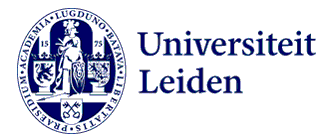Respon masyarakat dan dampak lingkungan terhadap peternakan Babi di Kampung Inden II dan wilayah sekitar Pasar Kenangan Distrik Ransiki Kabupaten Manokwari Selatan
People’s response to and environmental impact of Pig farms in Inden II Village and the surrounding areas of Kenangan Market of Ransiki Subdistrict of South Manokwari District
DOI:
https://doi.org/10.46549/jipvet.v12i1.184Keywords:
Environmental impact, People’s response, Pig farm, Dampak lingkungan, Peternakan babi, Respon masyarakatAbstract
Abstract
The study aimed at finding out people’s response to and environmental impact of pig farms in Inden II village and the surrounding areas of Kenangan market of Ransiki subdistrict of South Manokwari district. It was descriptive study that used observation technique to generally describe the people’s response to the pig farm in Inden II village and the surrounding areas of Kenangan market of Ransiki subdistrict. Population and sample were classified into 2: pig farmers and those who were affected by the pig farm. The total number of the villagers of Inden II village and the surrounding areas of Kenangan market was 58 households, with the number of the pig farmers of 12 households so that there were 46 households of the population that did not do pig farming and were affected by the pig farms and recruited as respondents. The observed variables included people’s response to sub-variable of smell with following indicators: smelly (1) and smelly/long lasting (2); sub-variable of sound with following indicators: loud (1) and very loud/continuous (2); sub-variable of waste management with following indicators: feces were left unprocessed and scattered in various places, pig feed remnant and waste unprocessed and scattered; sub-variable of the number of pigs with following indicators: environment cleanliness (1) and riding or driving and walking comforts (2). They were measured using five points Likert scale: very annoying (5), annoying (4), annoying enough (3), not annoying (2) not very annoying (1). The results of the study showed that 58.69% of the people were very annoyed by the smell of the pig farms, 60.87% of them were very annoyed by the loud sound of the pigs, 45.65% of them were very annoyed by the continuous sound of the pigs, 47.83% of them were very annoyed by the number of the pigs that produced wastes affecting environmental cleanliness, and 45.65% of them were very annoyed by the feces of the pigs left unprocessed and scattered in various places.
Keywords: Environmental impact; People’s response; Pig farm
Abstrak
Penelitian ini bertujuan untuk mengetahui respon masyarakat dari usaha peternakan babi terhadap dampak lingkungan di Kampung Inden II dan Sekitar Wilayah Pasar Kenangan Distrik Ransiki Kabupaten Manokwari Selatan. Jenis penelitian ini ialah jenis penelitian deskriptif dengan teknik observasi menjelaskan secara umum bagaimana respon masyarakat terhadap usaha peternakan babi di Kampung Inden II dan Wilayah sekitar Pasar Kenangan Distrik Ransiki. Jumlah populasi dan sampel dikelompokan menjadi 2 kelompok yaitu Masyarakat Peternak dan Masyarakat terkena dampak. Jumlah total masyarakat yang tinggal di Kampung Inden II dan wilayah sekitar pasar Kenangan yaitu sebanyak 58 Kepala Keluarga dengan jumlah peternak babi sebanyak 12 kepala keluarga sehingga jumlah populasi yang tidak beternak babi atau terkena dampak yaitu sebanyak 46 kepala keluarga sebagai responden. Variabel pengamatan yaitu Respon masyarakat terbagi atas subvariabel Penciuman (Aroma) dengan indikator berbau, berbau/tidak mudah hilang (2); Suara (Pendengaran) dengan indikator Sangat keras, Sangat Keras/Terus menerus; Penanganan Limbah indikator feses dibiarkan/tersebar diberbagai tempat, Sisa pakan dan sampah berantakan; Jumlah Ternak dengan indikator Kebersihan Lingkungan, Kenyamanan berkendara dan berjalan kaki. Pengukuran menggunakan skala Likert dengan kategori sangat terganggu (5), terganggu (4), cukup terganggu (3), tidak terganggu (2) dan sangat tidak terganggu (1). Hasil penelitian menunjukkan 58,69% sangat terganggu dengan bau yang ditimbulkan dari peternakan babi, 60,87% sangat terganggu dengan suara keras yang ditimbulkan, 45,65% masyarakat sangat terganggu dengan suara terus-menerus yang disebabkan oleh ternak babi, 47,83% merasa sangat terganggu oleh jumlah ternak yang mengganggu kebersihan lingkungan dan 45,65% masyarakat merasa sangat terganggu oleh feses yang dibiarkan dan tersebar diberbagai tempat.
Kata Kunci: Dampak lingkungan; Peternakan babi; Respon masyarakat
Downloads
References
Baraniah MA. 2014. Pegangan Memahami Importasi Hewan dan Produknya. Penebar Swadaya. Jakarta Timur.
Dewi Kristina. 2017. Materi Ilmu Ternak Babi. Fakultas Peternakan. Universitas Udayana. Denpasar.
Djatmiko RD. 2016. Keselamatan Dan Kesehatan Kerja. Yogyakarta : Deepublish.
Dumatubun AE. 2002. Kebudayaan, Kesehatan Orang Papua dalam Perspektif Antropologi. Jurnal Antropologi, 1 (1): 1-10.
Fitriani Z. 2015. Pengawasan dan Pengendalian Hewan Ternak Liar oleh Dinas Peternakan Kabupaten Kuantan Singingi Tahun 2012-2013. Jom Fisip Volume 2 (2): 1-13.
Husdiani I. 2005. Upaya Penanggulangan Dampak Kebisingan Terhadap Pendengaran Pekerja dengan Basis Pemetaan Kebisingan (Noise Maping) di Manufacturing Workshop PPT. X di Medan. Karya Akhir Profesional. Pasca Sarjana Universitas Sumatera Utara.
Iyai DA, Rahayu BWI, Sumpe I, Saragih D. 2011. Analysis of pig profiles on small-scale pig farmers in Manokwari-Papua Barat. Journal Indonesian-Animal. Agriculture.36(3): 190-198.
Jayanti DI, Santi DN Dan E Naria. 2013. Analisis Kadar Amoniak Di Udara Dan Sanitasi Peternakan Serta Keluhan Kesehatan Pada Pekerja Di Peternakan Ayam Di Desa Sei. Limbat Kecamatan Selesai Kabupaten Langkat. Jurnal Lingkungan Dan Keselamatan Kerja 3(1).
Pattiselanno F. 2004. Preliminary study on traditional pig raising by local communities at upland Kebar, Manokwari, West Papua. Suiform Soundings 4(1): 19-20.
Pattiselano F. 2005. Limbah yang Berguna: Harapan Peternak Babi Terhadap Sumber Pakan Alternatif di Pesisir Manokwari. Majalah Pertanian Berkelanjutan SALAM. No. 13(2005): 24-25.
Rachma M. 2012. Respon Masyarakat Terhadap Keberadaan Peternakan Babi di Kampung Katimbang Kelurahan Paccerakkang Kecamatan Biringkanaya Kota Makassar. Skripsi. Fakultas Peternakan Universitas Hasanuddin. Makassar.
Shin, Joungdu, Han S, Eom K, Sung S, Park S, and Kim H. 2008. Predicting Methane Production Potential Of Anaerobic Co-Digestion Of Swine Manure And Food Waste. Environ. Eng. Res. 13( 2) : 93~97.
Syahputra Aldi. 2007. Adaptasi Masyarakat Terhadap Perubahan Lingkungan. Jurnal Jom Fisip Vol. 4.
Tulak A, Khaerunnisa and Landius. 2011. Analysis of pig profiles on small-scale pig farmers in Manokwari-Papua Barat. Journal Indonesian-Animal. Agriculture. 36(3): 190-198.
Wahyuni S. 2011. Menghasilkan Biogas dari Aneka Limbah, Jakarta; Agromedia Pustaka.
Downloads
Published
How to Cite
Issue
Section
License
Copyright (c) 2022 Nathalya E.M. Sara, A. P. E. Widodo, Trisiwi W. Widayati

This work is licensed under a Creative Commons Attribution-NonCommercial-ShareAlike 4.0 International License.
License and Copyright Agreement
In submitting the manuscript to the journal, the authors certify that:
- They are authorized by their co-authors to enter into these arrangements.
- The work described has not been formally published before, except in the form of an abstract or as part of a published lecture, review, thesis, or overlay journal. Please also carefully read Jurnal Ilmu Peternakan dan Veteriner Tropis (Journal of Tropical Animal and Veterinary Science) Posting Your Article Policy at https://journal.fapetunipa.ac.id/index.php/JIPVET/publicationethics
- That it is not under consideration for publication elsewhere,
- That its publication has been approved by all the author(s) and by the responsible authorities “tacitly or explicitly“ of the institutes where the work has been carried out.
- They secure the right to reproduce any material that has already been published or copyrighted elsewhere.
- They agree to the following license and copyright agreement.
Copyright
Authors who publish with Jurnal Ilmu Peternakan dan Veteriner Tropis (Journal of Tropical Animal and Veterinary Science) agree to the following terms:
- Authors retain copyright and grant the journal right of first publication with the work simultaneously licensed under a Creative Commons Attribution License (CC BY-NC-SA 4.0) that allows others to share the work with an acknowledgment of the work's authorship and initial publication in this journal.
- Authors are able to enter into separate, additional contractual arrangements for the non-exclusive distribution of the journal's published version of the work (e.g., post it to an institutional repository or publish it in a book), with an acknowledgment of its initial publication in this journal.
- Authors are permitted and encouraged to post their work online (e.g., in institutional repositories or on their website) prior to and during the submission process, as it can lead to productive exchanges, as well as earlier and greater citation of published work.

This work is licensed under a Creative Commons Attribution-NonCommercial-ShareAlike 4.0 International License.





























.png)
